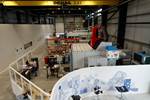Boeing 787-10 Dreamliner cleared for service
Boeing has more than 170 orders for the 787-10 from nine customers worldwide. First delivery is expected to Singapore Airlines in the first half of 2018.
Boeing (Everett, WA, US) announced on Jan. 22 that its 787-10 Dreamliner received an amended type certificate (ATC) from the US Federal Aviation Administration (FAA), clearing the airplane for commercial service.
The awarding of ATC caps a successful flight test program that began in March 2017 and involved three flight test airplanes that accumulated about 900 test hours. Boeing's flight test program team took the airplanes through a series of tests to confirm the airplane's handling, systems and overall performance met internal requirements and certification standards to ensure safety of flight.
"We are pleased to have met the rigorous standards set forth by the FAA and are eager to bring the airplane to market for our valued customers," says Brad Zaback, vice president and general manager of the 787 program. "After years of design and testing, our team has proven the quality, safety and reliability of the newest member of the Dreamliner family and we look forward to seeing the airplane in service later this year."
Other aviation regulatory agencies are expected to follow the FAA's lead and certify the airplane before it enters service.
As a stretch of the 787-9, the 787-10 retains more than 95% commonality while adding seats and cargo capacity. The airplane can fly 330 passengers, in a typical two-class configuration, up to 6,430 nautical miles (11,910 km).
To date, Boeing has more than 170 orders for the 787-10 from nine customers worldwide. First delivery is expected to Singapore Airlines in the first half of 2018.
Related Content
-
Next-generation airship design enabled by modern composites
LTA Research’s proof-of-concept Pathfinder 1 modernizes a fully rigid airship design with a largely carbon fiber composite frame. R&D has already begun on higher volume, more automated manufacturing for the future.
-
Automated robotic NDT enhances capabilities for composites
Kineco Kaman Composites India uses a bespoke Fill Accubot ultrasonic testing system to boost inspection efficiency and productivity.
-
Hybrid process marries continuous, discontinuous composites design
9T Labs and Purdue applied Additive Fusion Technology to engineer a performance- and cost-competitive aircraft bin pin bracket made from compression-molded continuous and discontinuous CFRTP.






